Märchen Veil (メルヘンヴェール), released 3/3/1987, developed by System SACOM
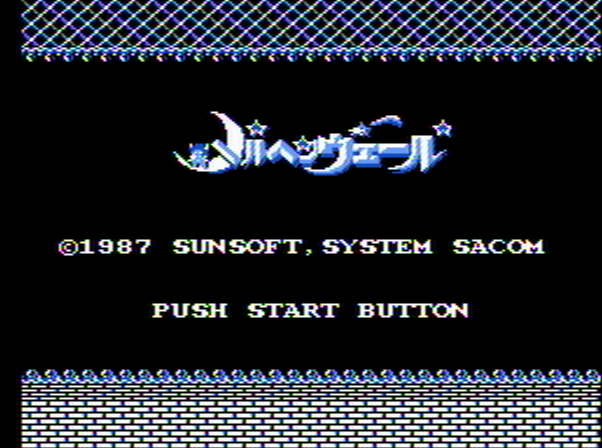
For various reasons I was not able to play that much in the past couple of weeks so I’m still not quite done with Sakura Taisen 2; I don’t think that game needs two posts so I will do another early RPG this weekend.
Märchen is a German word meaning “folktale” and was borrowed into Japanese; the “veil” in the title refers to a fictional race or monster type in the game. This game was originally released in 1985 for the PC88, and then ported to a bunch of other systems, including the Famicom Disk System in 1987. Unfortunately this is only half of the game, Märchen Veil II came out for computers but was not ported, so console players can only see half of the story.

You start out by creating a save file just like in Zelda.
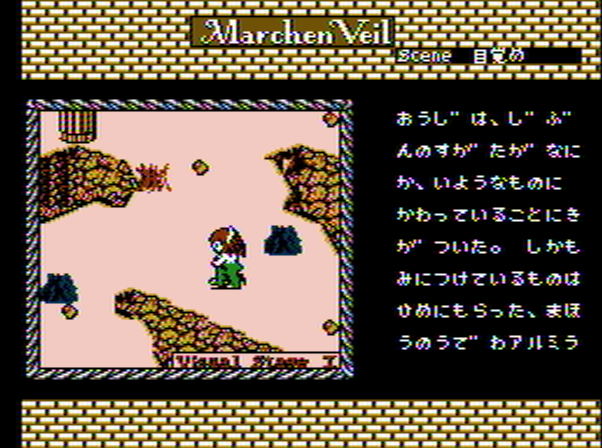
You then are presented with the “Visual Stage”, which gives you the story, although it continues off what must have been the introductory story in the instruction manual. It’s fairy tale like, fitting the title — the main character is a prince of the lake kingdom, and after going through many trials he earned the love of a princess. But a wizard didn’t like this and teleported the prince away, changing him into a monster called a Veil. The prince finds that he has his sword as well as a bracelet that the princess had given him, and he sets out to find his way back to the princess.
Each of the eight stages has one of these “visual stage” at the beginning. In 1985 this was quite unusual; most RPGs and adventure-style games had no developing plot at all, and only a handful of games even had any dialogue in the game. For consoles, the two Dragon Quest games did have a lot of town dialogue, but even DQ2 doesn’t have all that much of a developing plot. So I suppose this was a selling point of the game at the time (of course by modern standards the cutscenes are pretty thin).
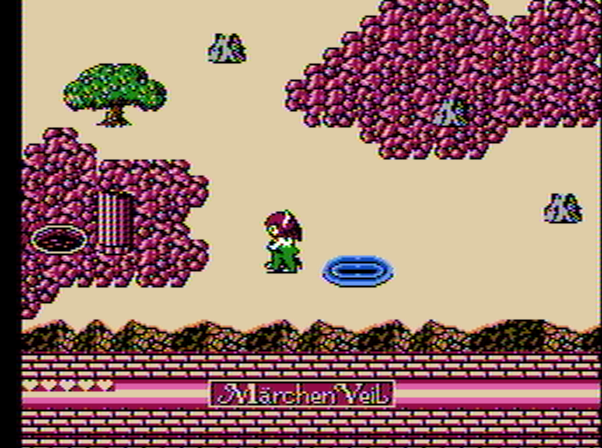
Then the action part begins. The original computer version operated on multiple screens like Hydlide and Zelda, but the FDS version has a scrolling map. It doesn’t scroll very smoothly, and the whole game is a bit choppy and sluggish.
It also follows the general pattern of the action-RPG-adventure hybrids from this area in that the difficulty level is pretty high and a lot of the content is hidden in secret areas with no hints. It’s not as bad as some games, but if you don’t use a walkthrough you will be wandering around a dying a lot before you figure out what is going on.
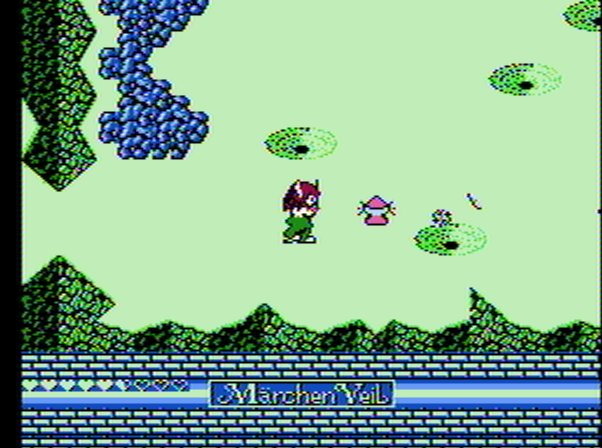
Your weapon is a sword that shoots things out of it. If you find additional hidden swords in the levels you can increase the number of projectiles (and maybe the power?) You get more hearts by killing certain monsters that drop fairies, and if you collect 4 fairies you get a heart upgrade. Refilling your health can only be done by finding full heals hidden in the stages, or sometimes beating enemies or destroying things on the map will give you a small refill.
There are a fair number of items in the game, like boots that make you walk over rough areas without slowing down, or a cape that lets you finish the first stage by flying over one area. But there are a lot of places on the map where you fall into a pit if you walk into it and you can only escape by mashing the attack button. There are other times where I suddenly died without really understanding why.
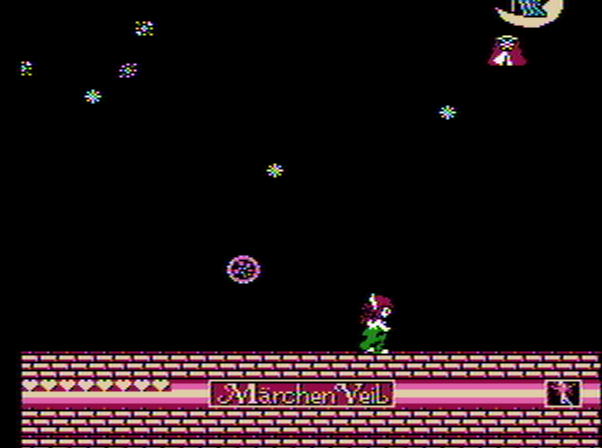
In the first stage you have to walk off the right side of the map, taking you to this weird area with random things shooting everywhere. If you get the cape above you can then finish the stage.
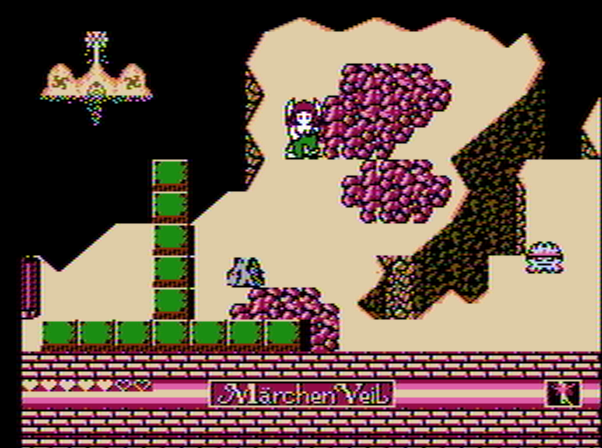
Once you reach that castle, it’s time for the second Visual Stage.
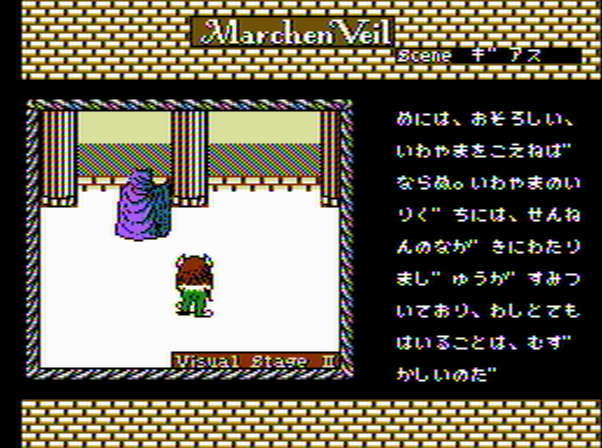
The prince meets Phoebus, who can’t help him but tells him to seek Neptune — this will require beating a monster, though.
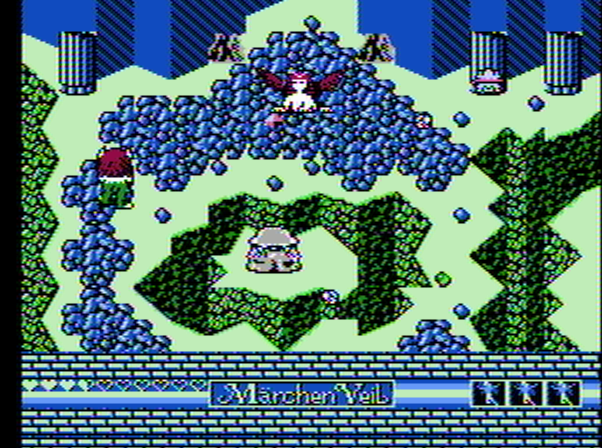
Fortunately the monster has a safe place you can stand in (near the top) where you can just shoot it without dying.
That’s as far as I played — this is a pretty bad game; even in 1987 it was not reviewed very well. It’s nice to see that contemporary reviewers also complained about things like inscrutable secrets and high difficulty because it feels then like I’m not judging the game unfairly from a modern perspective. Even if you did want to play it for the “visual stage” aspect you only get half the game unless you hunt down Märchen Veil II for a computer system.
Next week will be the Sakura Taisen 2 post, then I am playing Grandia. I may have mentioned this before, but I basically missed the entire PS1 era of RPGs with the exception of the Final Fantasies, Xenogears, and Chrono Cross. So I do want to try some of these well known titles as well.